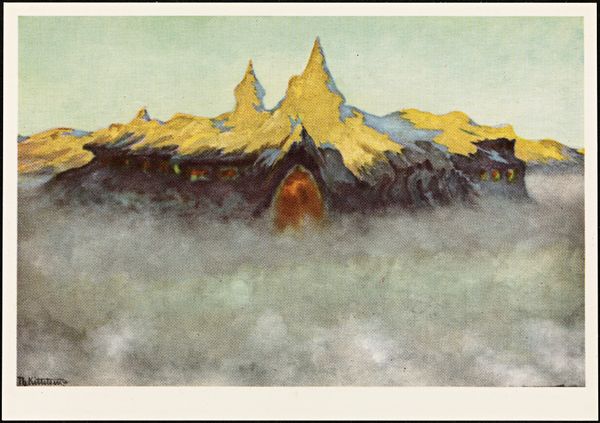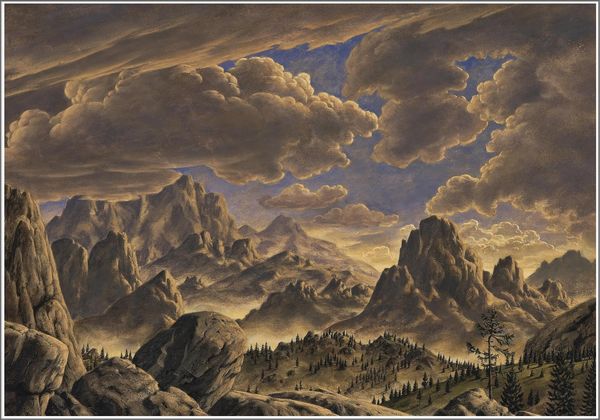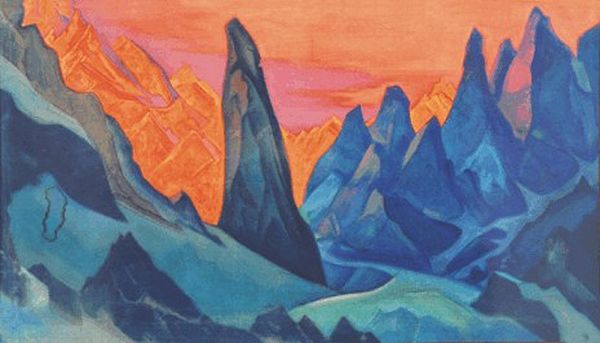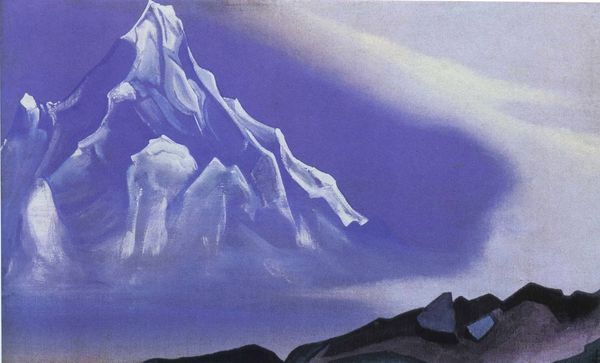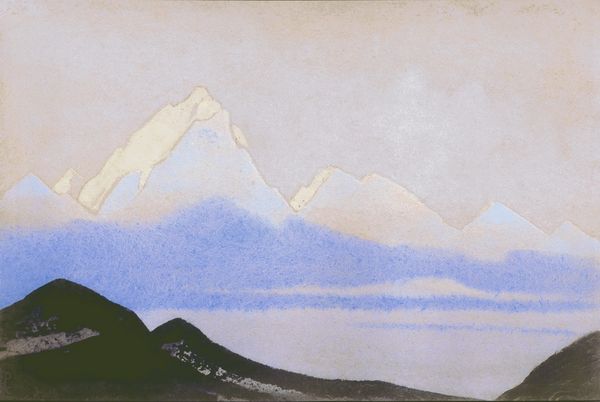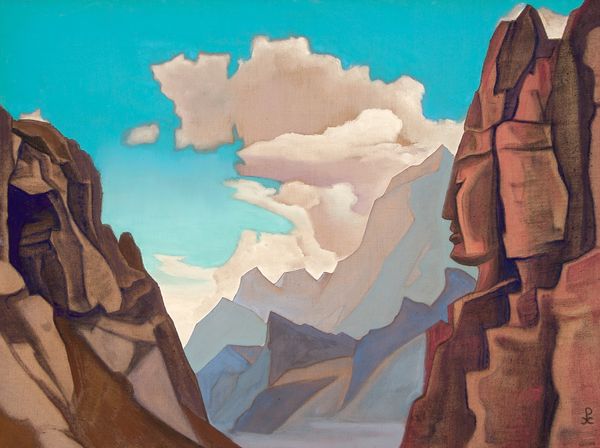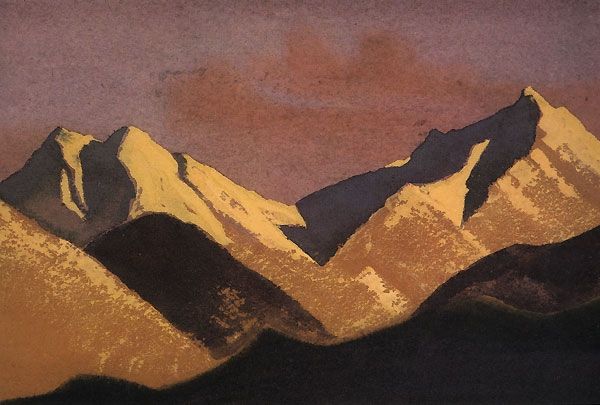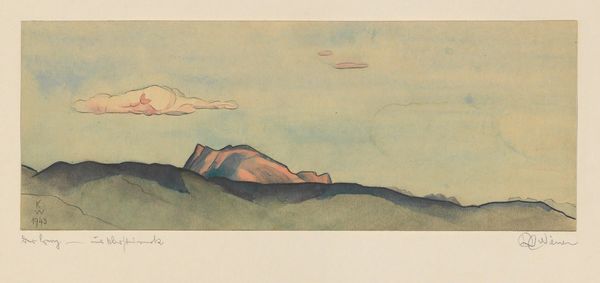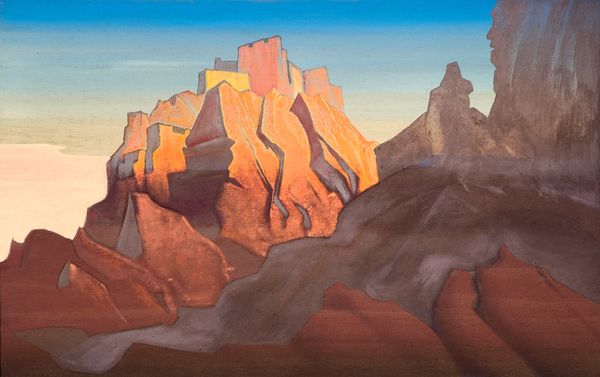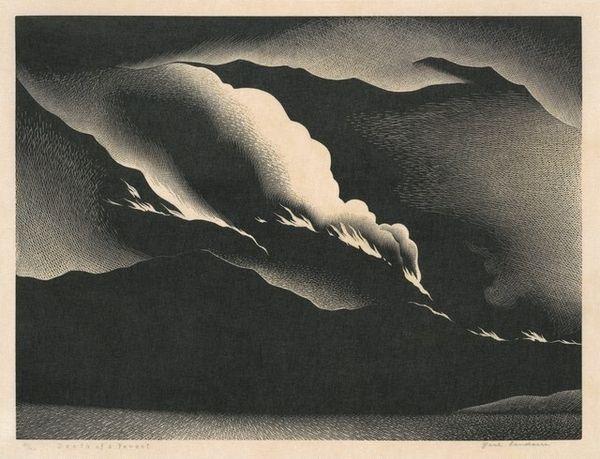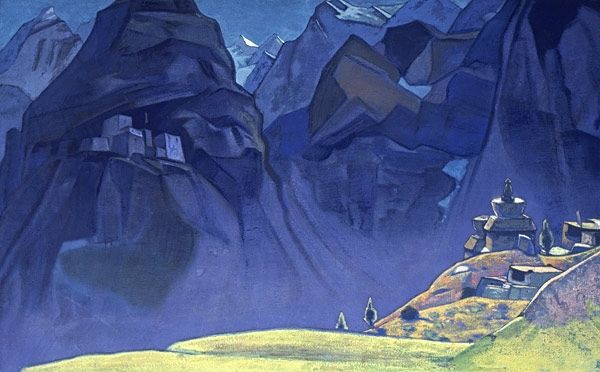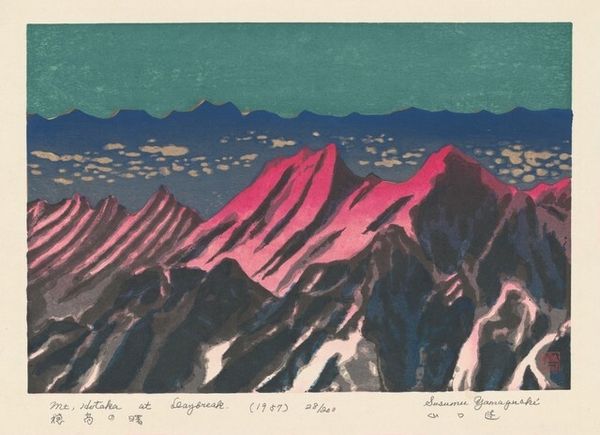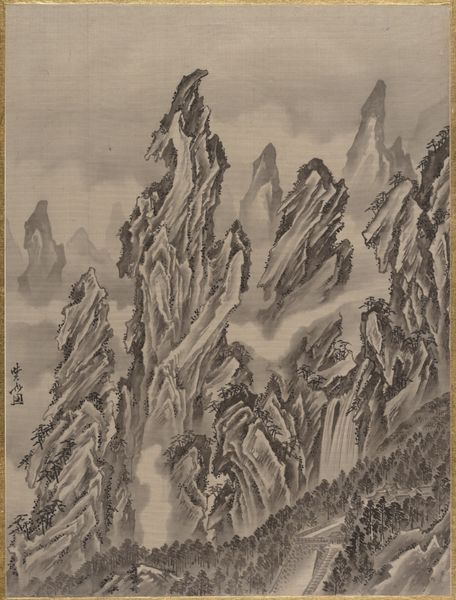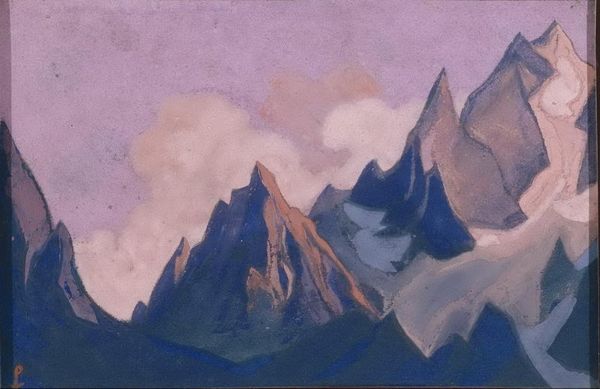
painting
#
painting
#
landscape
#
oil painting
#
surrealism
#
modernism
Copyright: Clarence Holbrook Carter,Fair Use
Curator: Standing before us is Clarence Holbrook Carter’s 1977 oil painting, "Eschatos 18." What's your first reaction to it? Editor: A bit ominous, wouldn’t you say? The way the looming rock formations and muted colors close in, it feels as if the ground itself might give way beneath you. I'm immediately thinking of unstable landscapes and precarious materials. Curator: Yes, the dynamism is quite palpable. Carter constructs a compelling arrangement of forms. Observe how the interplay of light and shadow emphasizes the volumes of the floating masses, establishing a pictorial tension between the grounded and the ethereal. It evokes a certain precarity, absolutely. Editor: I agree. Those floating, somewhat porous rocks and cloud-like objects also evoke, to me, the instability and decay often inherent in material processes. It makes you think about weathering, erosion, or even industrial breakdown as an ongoing reality. What was Carter's process when creating this otherworldly place? Was he working directly from nature, or building the forms more intuitively? Curator: The painting represents Carter's ongoing interest in Surrealism, with roots in landscapes yet rendered in a very personal visual language. While he grounded it in formal considerations, he likely composed from the subconscious. It also brings to mind a symbolic landscape, suggestive of transformation and transcendence, the “eschatos” or finality suggested in the title. Editor: "Transformation" resonates with how Carter has used the paint here. Look at the granular quality he’s achieved, the varied opacity of oil—it looks almost as if he’s pushing the material to mimic natural processes, making the hand of the artist somewhat invisible within it. What were the contexts and references in the modernist period which would make Carter want to use this style? Curator: The period of modernist experimentation sought new forms of representing reality through both subjective interpretation and abstraction, of course. In a way, Carter merges both in "Eschatos 18," using familiar landscape motifs as vessels to contain something more internal, something verging on the spiritual. He’s reconfiguring traditional themes and idioms through modern composition. Editor: Thinking about labor, it's striking how Carter conceals it, allowing the materiality to almost appear to evolve independent of the making process. Thank you. This reminds me how much of the landscape contains both lived and geological history within it. Curator: Indeed. And as an oil painting, “Eschatos 18” encourages our exploration of formal arrangements while simultaneously unlocking a door to a deeply personal artistic vision.
Comments
No comments
Be the first to comment and join the conversation on the ultimate creative platform.
